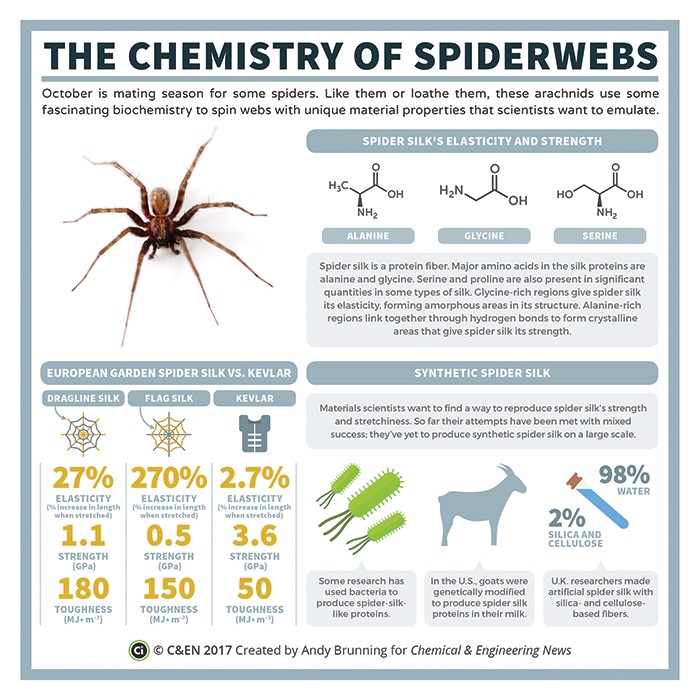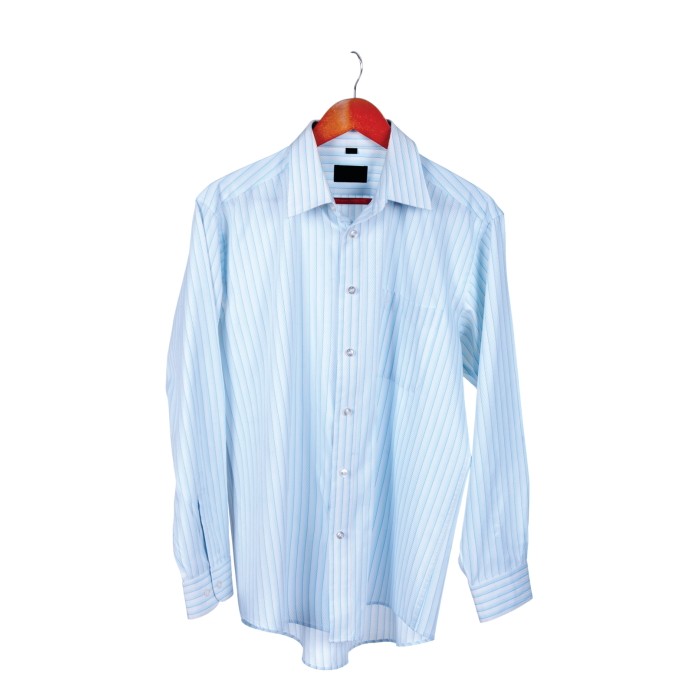Advertisement
Grab your lab coat. Let's get started
Welcome!
Welcome!
Create an account below to get 6 C&EN articles per month, receive newsletters and more - all free.
It seems this is your first time logging in online. Please enter the following information to continue.
As an ACS member you automatically get access to this site. All we need is few more details to create your reading experience.
Not you? Sign in with a different account.
Not you? Sign in with a different account.
ERROR 1
ERROR 1
ERROR 2
ERROR 2
ERROR 2
ERROR 2
ERROR 2
Password and Confirm password must match.
If you have an ACS member number, please enter it here so we can link this account to your membership. (optional)
ERROR 2
ACS values your privacy. By submitting your information, you are gaining access to C&EN and subscribing to our weekly newsletter. We use the information you provide to make your reading experience better, and we will never sell your data to third party members.
Biomaterials
Nano From The Forest
Tiny cellulosic particles are poised to make big impact on materials technology
by Mitch Jacoby
June 30, 2014
| A version of this story appeared in
Volume 92, Issue 26
Tucked inside the fibrous cellulose matrices that provide mechanical strength to wood and plants are nanostructured cellulose materials that are jockeying for scientists’ attention. Collectively referred to as nanocellulose, these naturally occurring substances—nanocrystals and nanofibrils—are highly abundant. These materials are being touted for their ability to take various forms, such as gels and films, and for the breadth of their potential applications, including electronics and tissue engineering.
That potential has triggered a wave of recent activity—most of it related to fundamental research, but some aimed at turning nanocellulose into commercial products. Last week, for example, scientists from several countries gathered in Vancouver, British Columbia, at a conference of the Technical Association of the Pulp & Paper Industry (TAPPI) to update attendees on their latest findings. They discussed methods for extracting, processing, and chemically modifying nanocellulose, as well as using it to make a variety of materials.
And last month, in Washington, D.C., the U.S. Department of Agriculture Forest Service together with the National Nanotechnology Initiative convened a workshop on nanocellulose commercialization. That meeting brought together top government and industry executives to identify information gaps and technical barriers impeding commercialization of cellulose nanomaterials (C&EN, June 9, page 26).
Some scientific ideas incubate slowly, and nanocellulose is one of them. Studies on nanostructured cellulose materials debuted in scholarly journals 65 years ago. But only recently have market forces driven the forest products industry to search for new high-value products. Nanocellulose looks promising. Market forecasters covering nanotechnology and nanomaterials predict that by 2020 the nanocellulose market in North America alone will be worth $250 million.
The source of the rapidly growing interest in these materials and their high projected value is an unusual combination of properties. “To be competitive commercially, just being a nanomaterial isn’t enough,” says Theodore H. Wegner, assistant director of the USDA Forest Products Laboratory (FPL) in Madison, Wis.

Nanocellulose is much more. Such materials are lightweight and exhibit high strength and stiffness and a high strength-to-weight ratio, Wegner explains. They are also thermally stable, have useful optical properties, and possess a low coefficient of thermal expansion. In addition, because these materials are derived from cellulose, which is produced in plants at the trillion-ton-per-year level, they are inherently renewable and sustainable. What’s more, they have the potential to be processed on an industrial scale at low cost—lower than other nanomaterials.
Cellulose is made up of crystalline bundles of polysaccharide chains, each of which consists of hundreds to thousands of glucose molecules linked by β-1,4 bonds. The molecular chains assemble as cellulose nanocrystals and nanofibrils within larger structures that make up the fibrous matrix of plant cell walls.
Nanocrystals and nanofibrils have similar chemical properties but somewhat different physical properties, explains Emily D. Cranston, a professor of chemical engineering at McMaster University, in Hamilton, Ontario. Nanocrystals are ricelike, she says, needle-shaped and strong with diameters in the 5- to 10-nm range and lengths on the order of 100 to 200 nm, depending on the source. In contrast, Cranston describes nanofibrils, which tend to have roughly 5-nm diameters, as spaghetti-like because they are longer (a micrometer or more), flexible, and easily entangled. Scientists are eyeing both forms of nanocellulose for commercial products.

Using cellulose nanomaterials in applications requires extracting them from their source. Cellulose nanocrystals are commonly obtained by treating plant material—wood pulp, for example—with sulfuric acid or other strong acids. According to chemist Alan W. Rudie, FPL’s nanocellulose project manager, the acid hydrolyzes amorphous regions of the cellulose-based fibrous matrix in plants, leaving the acid-resistant nanocrystals as a product.
Cellulose nanofibrils can be separated from micrometer-scale wood and plant fibers by applying mechanical force, but the delamination process is energy intensive. So various methods have been investigated to reduce the required energy input.

The University of Tokyo’s Akira Isogai and coworkers, for example, developed a method in which the starting plant material is treated with an oxidizer such as sodium hypochlorite and 2,2,6,6-tetramethyl-1-piperidine-1-oxyl, a free-radical oxidation mediator known as TEMPO (Biomacromolecules 2009, DOI: 10.1021/bm900414t). Rudie explains that the TEMPO method oxidizes some of the hydroxyl groups on the cellulose chain to carboxylic acids. Ionic repulsion then causes the material to swell, making it easier to separate the nanofibrils.
To make substantial quantities of nanocellulose materials available for research and development, Rudie, Richard S. Reiner, and coworkers scaled up the sulfuric acid hydrolysis and TEMPO oxidation processes. Those methods now underpin operations at FPL’s nanocellulose pilot plant in Madison. The plant, which is operated by Reiner, has the capacity to produce roughly 25-kg batches of cellulose nanocrystals and 2-kg batches of cellulose nanofibrils.
The Madison pilot plant is one of just two nanocellulose pilot plants in the U.S. The other is at the University of Maine. Outside the U.S., a handful of other facilities also produce substantial quantities of nanocellulose. For example, CelluForce, in Windsor, Quebec, which is a joint effort between Domtar and FPInnovations, produces ton quantities daily. Other pilot plants are found elsewhere in Canada as well as in Sweden and Finland.
With samples in hand for investigation (they can be purchased from the University of Maine), researchers are brimming with ideas for applications. For example, combining small amounts of nanocellulose—a few percent or less by weight—with water quickly forms durable hydrogels, such as the ones shown on the cover of this issue of C&EN. These highly hydrated, three-dimensionally porous materials share several properties with biological tissue, making them candidate materials for tissue engineering and drug delivery.
Motivated by these potential biomedical applications, Cranston, Xuan Yang, and coworkers examined a special class of hydrogels—injectable hydrogels. These materials can be prepared and deposited in situ, without surgery, by extruding hydrogel components from a syringe directly into a desired body location.
To begin assessing the suitability of nanocellulose hydrogels for this purpose, the team used a double-barreled syringe to blend carboxymethyl cellulose with dextran that was reinforced with various amounts of unmodified and aldehyde-functionalized cellulose nanocrystals. They found that under a wide range of conditions the components gelled within seconds and retained their shape in water and aqueous solutions for more than 60 days. They also found that the gels contained a uniform distribution of nanocrystals and caused minimal toxicity to fibroblast cells (Biomacromolecules 2013, DOI: 10.1021/bm401364z).
Unlike hydrogels, which are swollen with water, aerogels aren’t filled with anything—other than air. That property gives nanocellulose-based versions of these extremely lightweight, highly porous materials the potential to serve as supersponges for ocean oil spills, an application being investigated in several laboratories.
At Empa, the Swiss Federal Institute of Technology’s materials science institute in Dübendorf, Philippe Tingaut and coworkers prepared silylated cellulose nanofibril sponges, which they characterize as a network of thin cellulose sheets interconnected with nanofilaments that are covered with polysiloxanes. They report that compared with conventional inorganic porous materials, the nanocellulose sponges exhibit unprecedented flexibility. And when exposed to various oils and organic solvents, the sponges can soak up those liquids, absorbing up to 100 times their weight (Chem. Mater. 2014, DOI: 10.1021/cm5004164).
Shaoqin Gong and Qifeng Zheng of the University of Wisconsin (UW), Madison, together with FPL’s Zhiyong Cai, observed similar oil- and solvent-uptake results with cross-linked cellulose nanofibril-polyvinyl alcohol aerogels that the group treated with an organosilane. The hybrid sponges also displayed a knack for scavenging lead and mercury ions (J. Mater. Chem. A 2014, DOI: 10.1039/c3ta14642a).

Composites are another general area of materials applications in which nanostructured cellulose is making inroads. In search of lighter, stronger transparent materials for military use, including eye protection and face shields, scientists at Aberdeen Proving Ground Army Research Laboratory are studying ways of reinforcing synthetic polymers with nanocellulose. According to Aberdeen research chemist James F. Snyder, common polymer-reinforcing materials such as carbon fibers and ceramics typically add significant processing costs and adversely alter polymer clarity and color. Nanocellulose can sidestep those problems, he says.
Working with Hong Dong and other researchers at Aberdeen, Snyder demonstrated that electrospinning, a high-voltage method for forming thin fibers, can be used to make poly(methyl methacrylate) (PMMA) nanofibers reinforced with up to 40% cellulose nanocrystals. In an early publication of this work, the team reported that electrospinning, which aligns the nanofibers as well as the nanocrystals within the fibers, helped increase PMMA’s already high stiffness by about 17% (Carbohydr. Polym. 2012, DOI: 10.1016/j.carbpol.2011.11.015). The team has since boosted that value to roughly 30%, Snyder says.
“I believe that nanocellulose has the potential to provide distinct performance advantages to a wide range of defense-related applications such as lightweight transparent armor, coatings, and packaging,” Snyder says. “I would like to see our soldiers benefit from this opportunity.”
A quick scan of chemistry journal tables of contents shows that researchers continue to come up with sophisticated applications that benefit from the useful properties of nanocellulose. Flexible electronics recently joined the list.
Electronic circuits that bend, stretch, and adopt unusual shapes without losing function could be the basis of wearable computers, advanced medical implants, and other devices. A common difficulty in fabricating such gadgets is the high thermal expansion coefficients of the flexible plastic substrates upon which the circuits are typically deposited.
UW Madison electrical engineers Jung-Hun Seo and Zhenqiang (Jack) Ma, together with FPL’s Ronald C. Sabo, found that compared with common flexible substrates, transparent films made from cellulose nanofibrils have much lower thermal expansion coefficients. The team demonstrated the film’s potential by using the material to support working thin-film transistors.
And in another electronics advance, researchers recently showed for the first time that organic solar cells fabricated on cellulose nanocrystal substrates can convert nearly 3% of sunlight to electricity. That efficiency is much lower than that of other types of solar cells, but it is in line with those of organic solar cells, which are attractive because of their low cost. The research team, which includes Bernard Kippelen of Georgia Institute of Technology, Robert J. Moon of FPL and Purdue University, and coworkers, demonstrated that nanocellulose-supported solar cells can be easily separated into their components and recycled with minimal energy input owing to nanocellulose’s biodegradability. That feature offers a distinct cost and environmental life-cycle advantage compared with the petroleum-based substrates used in conventional organic solar cells (Sci. Rep. 2013, DOI: 10.1038/srep01536).
Cellulose aficionados and natural polymer enthusiasts are abuzz with nanocellulose and its long list of potential uses. But if and when a hot scientific topic will move into commercial use is difficult to predict. A safe bet, though, is that nanocellulose will live up to its potential.




Join the conversation
Contact the reporter
Submit a Letter to the Editor for publication
Engage with us on Twitter